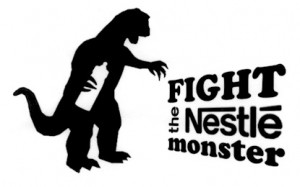If a company still doesn’t “get” how social media has changed the rules of branding by empowering consumers, look no further than the ongoing Nestle firestorm.
 Nestle has been in trouble for awhile, mostly related to its continuing use of palm oil in its products. Palm oil is linked to environmental nastiness, including deforestation, greenhouse gas emissions and endangered species loss.
Nestle has been in trouble for awhile, mostly related to its continuing use of palm oil in its products. Palm oil is linked to environmental nastiness, including deforestation, greenhouse gas emissions and endangered species loss.
Caroline McCarthy of CNET News shared a balanced post about the Nestle brand crisis, triggered by ticked off consumers on Facebook. Nestle was clueless about the power shift enabled by social media and acted in an old-school authoritarian “we own the brand” way. It not only didn’t work, it backfired.
There are vital lessons from the Nestle debacle for professional communicators advising their execs or clients:
- Before diving into social media, make sure key decision makers who think they want to go social media truly “get” how the game is played. It’s not a press release.
- Make sure they understand how Facebook, Twitter, LinkedIn, etc. aren’t one way vehicles (where the brand dominates the message), but an invitation to a never ending dance with constantly changing partners, some of whom are never your friend and may only want to dance if they can slap your ego and try to make you a better dancer.
- Don’t go social media unless the brand is willing to take the risk of jumping off the cliff, giving up control to customers and consumers who will express their viewpoints, both positive and negative.
- If your company or client wants to control the message, then social media isn’t for them. Look at how Nestle tried to tell people not to post their logos. It will incur a wrath not unlike “It’s not OK for people to use altered versions of your logos but it’s OK for you to alter the face of Indonesian rainforests? Wow!”
- Creating LinkedIn, Facebook and Twitter accounts is just the first step. The goal isn’t to tweet or post, it’s to build an active community and an authentic two-way relationship based on trust. It’s easy to get started in social media, but time-consuming and challenging to remain engaged and build a following.
- Remember that even if your company or client decides not to engage in social media, this won’t stop rants, rebellion and revolution. People will find a way to express themselves and let it be known they’re disturbed, upset, confused, disappointed or whatever the view. The train has left the station, so be prepared.
- As we’ve learned from Nestle (and so many others), people don’t want to be scammed, ignored or mistreated. It will come back to bite you. So if your exec or client wants social media to become a positive tool, the brand must be a concerned good listener prepared to take action to correct situations that aren’t right.